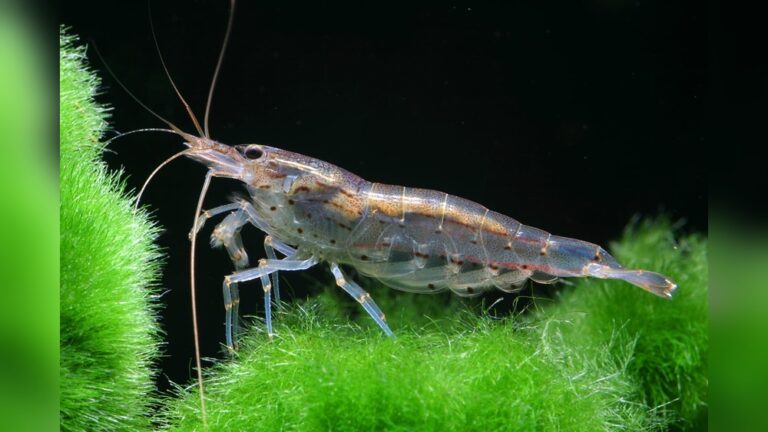Magur Fish Ban In India: Protecting Native Ecosystems
India has banned the farming of Magur fish. This decision stems from health and environmental concerns.
The Magur fish, often found in stagnant water, poses risks to human health. Its farming practices can harm ecosystems and biodiversity. These factors have led authorities to enforce strict regulations. Understanding the reasons behind this ban is crucial for those involved in fish farming and consumers alike.
This blog will explore the potential impacts on the industry and alternatives available to farmers. Discover the implications for local economies and what this means for biodiversity. Dive into the details of this ban and why it was necessary. Stay informed and explore the broader effects on the aquaculture industry in India.
Introduction To Magur Fish
Magur Fish, commonly known as African Catfish, has been a subject of concern in India. Originally introduced for aquaculture, this fish has stirred environmental issues. Understanding its origin, characteristics, and ecological impact is crucial.
Origin And Characteristics
The Magur Fish is native to Africa. It was introduced in India for commercial farming. Known for its rapid growth, it adapts easily to various environments. Its robust nature makes it a popular choice for fish farmers.
This fish has a smooth, scaleless body. It possesses whisker-like barbels, aiding in sensing food. Its ability to thrive in poor water conditions sets it apart from local species.
Ecological Impact
Magur Fish poses a threat to local ecosystems. It competes with native fish for food and habitat. Its voracious appetite impacts the food chain. Local species struggle to survive amid competition.
This fish alters water quality, affecting biodiversity. Its presence leads to reduced oxygen levels. Native aquatic life suffers as a result. The fish’s adaptability enables it to dominate environments.
Authorities have banned its farming to protect local ecosystems. Efforts focus on preserving indigenous aquatic species. The ban aims to restore balance in aquatic habitats.
Reasons For The Ban
The ban on Magur fish in India stems from serious environmental issues. This fish, also known as the African catfish, poses multiple threats. Understanding these threats helps explain why authorities took action.
Threats To Native Species
Magur fish outcompetes native fish for food and habitat. It grows faster and reproduces quickly, dominating local ecosystems. This aggressive behavior reduces biodiversity and affects native fish populations. Native species struggle to survive alongside Magur fish.
Environmental Concerns
The presence of Magur fish leads to significant environmental damage. They disturb aquatic habitats by digging and stirring up sediments. This action harms water quality and disrupts plant life. Poor water conditions affect all aquatic organisms, not just fish. This disruption can cause a ripple effect throughout the ecosystem.
Government Regulations
India enforces a ban on Magur fish due to environmental concerns and health risks. These regulations aim to protect native ecosystems and ensure public safety by restricting the farming and consumption of this invasive species.
The ban on Magur fish in India has sparked significant interest and debate across the country. This decision is not just about the fish itself, but about the broader implications for public health, the environment, and the fishing industry. Understanding the government regulations surrounding this ban provides valuable insights into how policies impact our daily lives.
Legal Framework
The Indian government has put in place a strict legal framework to support the ban on Magur fish. This decision was made after reports of its harmful effects on health and the environment. The regulations are designed to protect consumers and preserve local ecosystems. The legal framework involves specific laws that prohibit the farming and sale of Magur fish. These laws are backed by scientific research highlighting the negative impact of this species. By regulating its production, the government aims to prevent health risks associated with its consumption.
Enforcement Challenges
While the legal framework is clear, enforcement presents its own set of challenges. Regulatory bodies often face difficulties in monitoring and controlling the sale of banned fish. Limited resources and widespread non-compliance make enforcement a daunting task. Authorities often struggle to curb illegal farming practices. In many regions, Magur fish farming continues due to lack of awareness and economic incentives. This raises the question: how can enforcement be strengthened to ensure compliance? Public cooperation is crucial for effective enforcement. Educating consumers about the risks associated with Magur fish can lead to better compliance. When communities understand the reasons behind the ban, they are more likely to support enforcement efforts. Have you ever thought about how government regulations directly affect your food choices? The ban on Magur fish is a reminder of the intricate balance between regulation, enforcement, and public awareness. How can you contribute to ensuring that such regulations achieve their intended goals?
Impact On Local Fisheries
The Magur fish ban in India greatly affects local fisheries. Fishermen face reduced income due to the ban. Many rely on Magur for their livelihood. This prohibition aims to protect native species and maintain ecological balance.
The ban on Magur fish in India has stirred significant discussions across the country, particularly among those involved in local fisheries. This decision, rooted in environmental and health concerns, has led to a ripple effect in various sectors. For local fisheries, it translates to adapting to new realities and exploring alternative opportunities to sustain their livelihoods. How are these changes reshaping the economic landscape and strategies within the fisheries community? Let’s dive into the specifics.
Economic Implications
The economic impact of the Magur fish ban is palpable in local fisheries, where many relied heavily on its cultivation and sale. Income levels have fluctuated, causing concern among families who depend on fishing as their primary source of income. The sudden shift away from Magur fish means many fisheries must reassess their financial strategies to mitigate losses. Fishery owners might find themselves grappling with rising operational costs, especially if they need to transition to cultivating other fish species. With Magur fish off the table, you might wonder what options are left for these communities to thrive economically.
Adaptation Strategies
To counter the economic blow, local fisheries are exploring various adaptation strategies. Some have started diversifying their aquaculture practices, introducing species like Rohu and Catla, which are both popular and sustainable choices. This shift not only helps stabilize income but also supports ecological balance. Training programs have emerged as a beacon of hope, offering fishermen new skills to improve their practices. By embracing technology, fisheries can enhance efficiency and productivity, ensuring that they remain competitive in the ever-changing market. Moreover, community collaborations are on the rise, allowing fishermen to pool resources and share knowledge. Have you considered how these strategies might influence the future of local fisheries in India? Perhaps, this is the moment for a collective reimagining of fishing practices. As these communities navigate the aftermath of the Magur fish ban, the focus is on innovation and resilience. With practical strategies and community support, local fisheries can not only survive but thrive amidst these challenges.
Conservation Efforts
India’s ban on Magur fish highlights crucial conservation efforts. This decision aims to protect native aquatic life and preserve biodiversity in local ecosystems. By curbing the spread of invasive species, authorities strive to maintain ecological balance and ensure sustainable fisheries.
The ban on Magur fish in India has raised awareness about the need for conservation efforts to protect native aquatic species. This move is not just about prohibiting a particular fish; it symbolizes a broader commitment to restoring balance in aquatic ecosystems. Conservation efforts are crucial to safeguarding biodiversity and ensuring sustainable practices for future generations.
Restoration Projects
Restoration projects play a vital role in reviving the habitats that Magur fish and other species call home. These projects focus on cleaning polluted water bodies and restoring natural vegetation along riverbanks and lakes. When I visited a project site in Maharashtra, I witnessed the transformation of a once polluted lake into a thriving ecosystem. Local governments and NGOs collaborate to create protected areas where native species can flourish without the threat of invasive species. Efforts include restocking native fish populations and monitoring water quality. Such initiatives ensure that the restoration is not just temporary but sustainable over the long term.
Community Engagement
Community engagement is crucial in the success of conservation efforts. Local communities, especially those dependent on fishing, need to be involved in the process. Educating them about the harmful effects of Magur fish and the benefits of native species can bring about lasting change. Workshops and awareness programs are organized to teach sustainable fishing practices. Engaging with the community fosters a sense of ownership and responsibility towards their local environment. Have you ever thought about how your actions can directly impact the ecosystem around you? By involving communities, conservation efforts gain ground. People who once relied on Magur fish for their livelihood are now exploring alternative, eco-friendly options. This shift not only benefits the environment but also enhances community resilience and adaptability. Conservation is a collective effort. It requires cooperation, education, and a willingness to adapt. What steps can you take today to contribute to the conservation of your local environment?
Alternatives To Magur Fish Farming
The ban on Magur fish farming in India has left many in the aquaculture industry searching for sustainable alternatives. Magur, known for its adaptability and rapid growth, was once a popular choice among fish farmers. However, concerns about its impact on local ecosystems led to its prohibition. So, what’s next? Let’s explore viable and environmentally friendly options that can replace Magur fish farming.
Sustainable Aquaculture
Turning to sustainable aquaculture is like investing in the future of our environment. You can choose species that grow without harming local habitats. Think of fish like Tilapia or Catla; they are resilient and can thrive in various conditions.
Innovative techniques like integrated multi-trophic aquaculture (IMTA) can optimize resources. It allows for the cultivation of different species in a single system, utilizing waste and minimizing environmental impact. Have you considered how this could boost efficiency while preserving the ecosystem?
Promoting Native Species
Embracing native species in fish farming can be a game-changer. These species are well-suited to local waters and contribute to biodiversity. Rohu and Mrigal are excellent examples; they are abundant and culturally significant.
You can foster local pride by supporting indigenous species. It empowers communities and reduces dependency on foreign breeds. Wouldn’t you prefer a farming approach that celebrates your region’s natural heritage?
By focusing on native species, you not only ensure environmental sustainability but also strengthen the local economy. It’s an opportunity to make a positive impact that resonates beyond the farm.
In choosing alternatives to Magur fish farming, you pave the way for a more sustainable future. These options offer practical solutions that benefit both the environment and the economy. What steps will you take to join the movement towards responsible aquaculture?
Public Awareness Campaigns
Public awareness campaigns play a crucial role in the Magur Fish ban in India. These campaigns educate citizens about the harmful effects of consuming and farming this fish. The initiatives aim to inform the public and promote sustainable practices.
Educational Programs
Educational programs target schools and communities to spread knowledge. They focus on explaining the reasons behind the Magur Fish ban. Interactive sessions help learners understand the environmental and health impacts. Educators use simple language to ensure everyone grasps the information. These programs also encourage discussions and questions to engage participants.
Media Involvement
Media plays a significant role in raising awareness about the ban. Television and radio broadcasts inform a wider audience. News segments highlight the dangers of consuming Magur Fish. Social media platforms also share informative content. This ensures the message reaches younger audiences. Media stories often feature expert opinions to build trust and credibility. Engaging visuals and infographics make the information more digestible.
Future Directions
India faces challenges with the Magur fish ban due to health and environmental concerns. Authorities aim to protect native species and improve water quality. Sustainable alternatives and strict regulations could guide future efforts.
As India grapples with the environmental and health implications of the Magur fish ban, the need for future directions becomes evident. What can be done to ensure sustainable fish farming practices while addressing the needs of consumers and stakeholders? This question opens a window to potential solutions and pathways. With the right strategies, India can balance economic interests with ecological sustainability. ###
Research Opportunities
Research is a critical pathway for understanding the broader impacts of the Magur fish ban. There’s a vast opportunity to study alternative fish species that can replace Magur in the market without the same adverse effects. Researchers can also focus on developing sustainable aquaculture techniques that minimize environmental harm. How can technology play a role in making fish farming more sustainable? Exploring new breeding methods and water management systems could provide answers. ###
Policy Recommendations
Policy plays a pivotal role in shaping the future of fish farming in India. It’s essential to develop policies that encourage sustainable practices while supporting local fish farmers. Incentives could be introduced to promote the farming of native fish species that are both environmentally friendly and economically viable. Could stricter regulations on illegal farming practices make a difference? Implementing comprehensive monitoring systems can ensure compliance and protect ecosystems. Moreover, policies that facilitate collaboration between government bodies, researchers, and farmers can lead to innovative solutions. By fostering an inclusive dialogue, stakeholders can work towards a shared vision for the future. The Magur fish ban presents a chance to rethink and reshape fish farming in India. With research and thoughtful policy changes, it’s possible to create a more sustainable and prosperous industry. What role do you think you can play in this evolving narrative?
Frequently Asked Questions
Is Magur Fish Banned In India?
Yes, Magur fish is banned in India. The ban applies specifically to the cultivation of African Magur. It poses environmental risks and threatens native aquatic species. The Indian government imposed this ban to protect local biodiversity and maintain ecological balance in water bodies.
Which Fish Is Prohibited In India?
Selling or consuming Piranha fish is prohibited in India. Importing and farming Piranha is banned due to their aggressive nature and potential environmental impact. Always check local regulations for other restricted species.
Why Do Cat Fish Ban In India?
Catfish is banned in India due to its invasive nature and threat to local aquatic ecosystems. It depletes resources and harms native species. The government aims to protect biodiversity and maintain ecological balance by prohibiting its cultivation and trade.
Is Tilapia Fish Banned In India?
Tilapia fish is not banned in India. It is widely farmed and consumed across the country. The government regulates its farming to ensure sustainability and prevent environmental impact. Always ensure you buy from reputable sources to ensure safety and quality.
Conclusion
The Magur fish ban in India serves a vital purpose. Protecting native species is crucial for biodiversity. This ban also ensures safer water ecosystems. Consumers should be aware of the health risks Magur fish pose. Eating contaminated fish can lead to serious health issues.
Educating the public about sustainable fishing practices is important. Local fish varieties offer healthier options. Supporting the ban helps preserve India’s aquatic life. Everyone can contribute to healthier ecosystems. Choose wisely when buying fish. Respecting regulations aids in maintaining balance.







